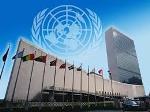The 2030 agenda and the SDGs – a course correction?
Published on Fri, 2015-10-02 10:26
A rare sense of euphoria permeated the adoption of the 2030 Agenda and the Sustainable Development Goals (SDGs) in New York this weekend. The multitude of events that have been taking place on First Avenue and beyond had a party atmosphere. And it was not only government delegates but many civil society activists who negotiated for systemic change that celebrated the new agenda that promises transformative change for sustainable development. Yet will implementation actually bring real change? The SDGs do signify a major shift in development as an international project. The Millennium Development Goals (MDGs) are an aid agenda, driven by donor agencies facing a crisis of declining support for development budgets in the post-Cold War world and mired in controversies over structural adjustment. As I have argued in a paper with David Hulme, the moral imperative to end poverty that emerged as a global norm in the 1990s provided a unifying purpose and a more convincing narrative and raison d’être. The SDGs on the other hand grew out of the Rio + 20 process that set an agenda to change the course of increasingly environmentally unsustainable and socially unequal development. The formulation process involved governments, civil society, private sector and not just development professionals. It was firmly in the hands of national governments, with middle-income countries like Colombia playing a leading role. The SDGs are in effect a universal recognition that poverty, inequality and environmental sustainability are as much a challenge in the UK as they are in Liberia. They are not merely a North-South project, but rather a genuinely global project, involving multiple actors beyond the state. The SDG agenda undoubtedly responds to some of the critical shortcomings of the MDGs in some important ways. First: simplicity and reductionism. One of the widely acclaimed virtues of the MDGs was said to be their simplicity, with the SDGs being widely criticised, particularly by development professionals, for being ridiculously over-bloated. But simplicity also meant simplification. The goals reduced the meaning of ‘development’ to delivering basic needs, replacing the idea of development as structural transformation to expand productive capacity, shifting power structures and social relations, ultimately the expansion of human freedoms. The SDGs are not only more numerous, but represent a more ambitious agenda for altering the course of development and the need to reform those institutions that are the key means of implementation. Second: unfair metrics for poor countries. Recognising the importance of context, the Declaration states that the SDG targets are ‘defined as aspirational and global’, while governments are to set their own targets in the light of their national circumstances. In contrast, the idea of national adaptation was fiercely resisted for the MDGs by the UN leadership. Those goals set ‘one-size-fits-all’ 2015 targets for all countries, regardless of context. The monitoring framework held countries to the task of achieving the same target regardless of starting point. Naturally, countries that started far behind, mostly the Least Developed Countries concentrated in Sub-Saharan Africa, tended to be off course in achieving the goals and thus came to be judged as failures. But, measured by the pace of progress, studies have shown that the best performers have been some of the African countries. Third: the missing goal for inequality. Although it has become one of the most pressing challenges in almost all countries today, inequality was not a goal in the MDGs. This reinforced the view of those goals as constituting an agenda for providing social safety nets as a response to an economic model that was and still is increasing inequalities. The debate about the inclusion of SDG10 – which aims to reduce inequality within and between countries – was one of the most contentious political battles. Its ten targets unavoidably address the need for institutional reforms in economic governance. Yet, for these texts to be a ‘course correction’ in reality, the challenge will be to ensure that the hard-won gains on politically contentious issues are not lost in implementation. There are obviously risks that the complex, ambitious, 17 goal agenda will be dumbed down and simplified. Already, a private initiative to publicise the SDGs – Global Goals – has simplified them, shortening the titles and reinterpreting them in the process. Barbara Adams points out in her recent blog that ‘the concept of “sustainable development” is completely lost’ as words like ‘just’, ‘inclusive’ and ‘sustainable’ are removed and replaced by ‘responsible’ and ‘strong’. A further risk is the scope allowed for national adaptation, which in certain circumstances can clearly be an invitation to water down the ambition of the SDGs. On this front implementation of the inequality goal is particularly challenging as it is one of the few goals that requires a major change in course from the trends of the last decade, including shifts in the economic model that has been promoted over the last decade. In sum, the SDGs are a politically negotiated consensus that has no enforcement mechanism built in. The onus now falls squarely on civil society groups to leverage the SDGs as course correction. By Sakiko Fukuda-Parr. Sakiko Fukuda-Parr is Professor of International Affairs at The New School in New York. Source: Sheffield Political Economy Research Institute. The University of Sheffield. |


